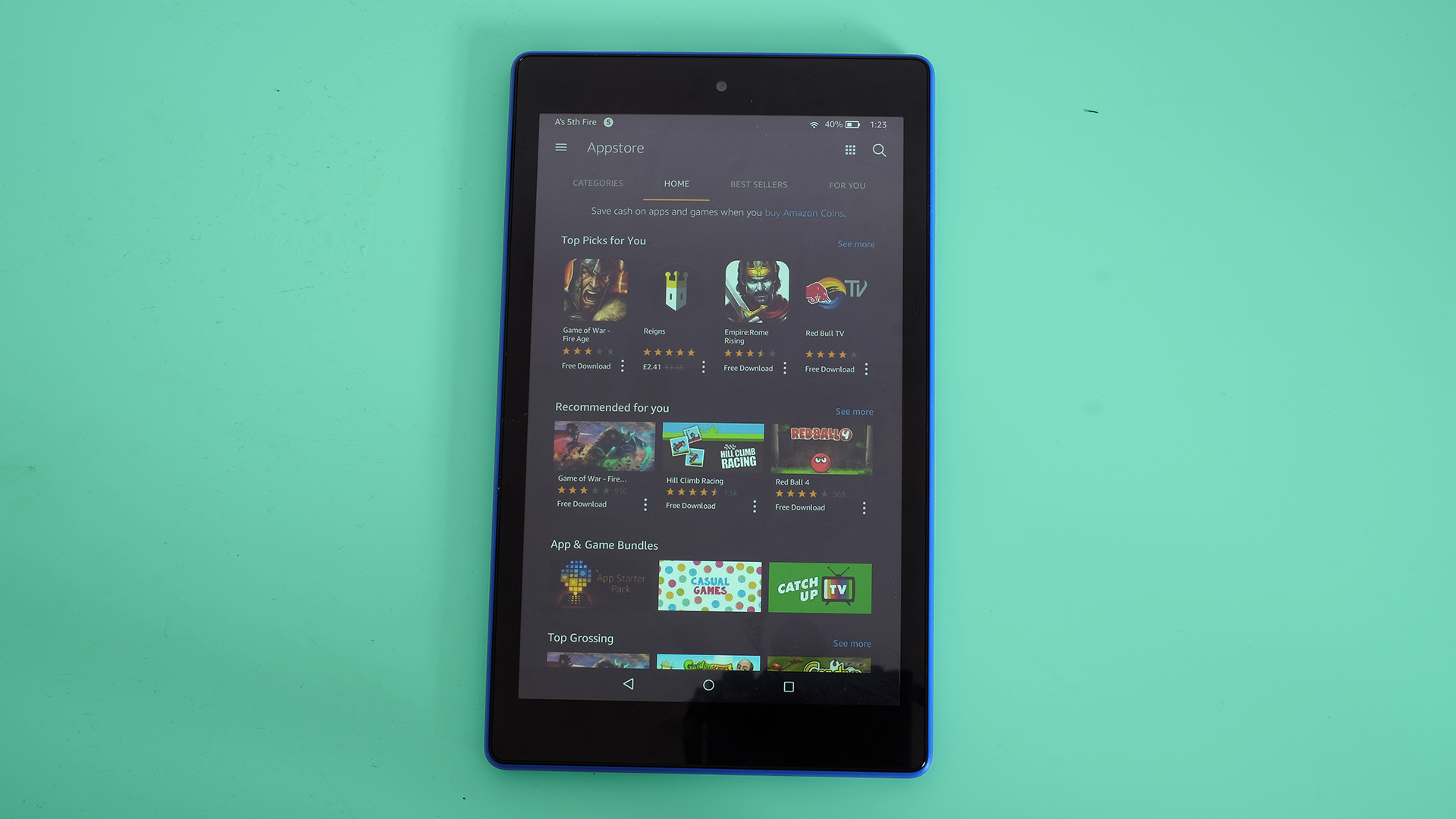TechRadar Verdict
There’s no major new hardware in the 2017 edition of the Fire HD 8, but it’s still one of the only decent sub-$100/£100 tablets. It’s not worth upgrading from last year’s Fire HD 8, though.
Pros
- +
Improved speakers
- +
Decent value
- +
Good battery life
Cons
- -
Reflective screen
- -
Few meaningful upgrades
- -
A little slow in places
Why you can trust TechRadar
If you’re new to tablets, the Amazon Fire HD 8 (2017) is one of the most appealing deals going. It costs just $80/£80, is slim and portable and gives you access to a lot of the apps you have on your phone, but on a bigger screen.
Those already familiar with the tablet game may be a little disappointed with how little progress Amazon has made with the 2017 edition of the Amazon Fire HD 8, though. In most respects, it’s identical to last year’s version.
The latest change? Alexa support is now built into the Amazon Fire HD 8, letting you ask this digital assistant general knowledge questions and control any Alexa-supporting smart home gear right from the tablet. You get this with the last model with a software update, though. Amazon has also given the speakers a much-needed upgrade.
There are countless other improvements Amazon could have made to the tech, but as lower-cost tablets have barely progressed in the last year there’s not a huge amount of competition, so are the upgrades Amazon has made here enough for us to recommend the Fire HD 8 (2017)?

Amazon Fire HD 8 (2017) price and release date
- Out now
- Starts at $80/£80
The Amazon Fire HD 8 (2017) is out now in both the US and the UK, with no word on an Australian release.
It starts at $80/£80 (around AU$105) for a 16GB model with lock screen adverts, rising to $95/£90 (roughly AU$125) without adverts, $110/£100 (around AU$145) for a 32GB model with adverts, and topping out at $125/£110 (approximately AU$165) for a 32GB version without adverts.
Key features
- Low-end specs
- Value over raw performance
- Not for the enthusiast crowd
The new Amazon Fire HD 8 is a tablet that packs in low-end tech just good enough to satisfy most buyers. If you’re someone who regularly reads our reviews and follows tech, you’ll be able to find a way to sneer at almost every aspect if you decide to.
Even if you are that kind of person, it doesn’t mean the Fire HD 8 (2017) won’t be suitable for friends and relatives, though. Just like last year, it’s a tablet laser-focused on someone who wants a cheap, reliable slate but doesn’t expect the earth.
Compared to an iPad Pro 10.5, for example, the Amazon Fire HD 8’s screen will seem blocky and less punchy.
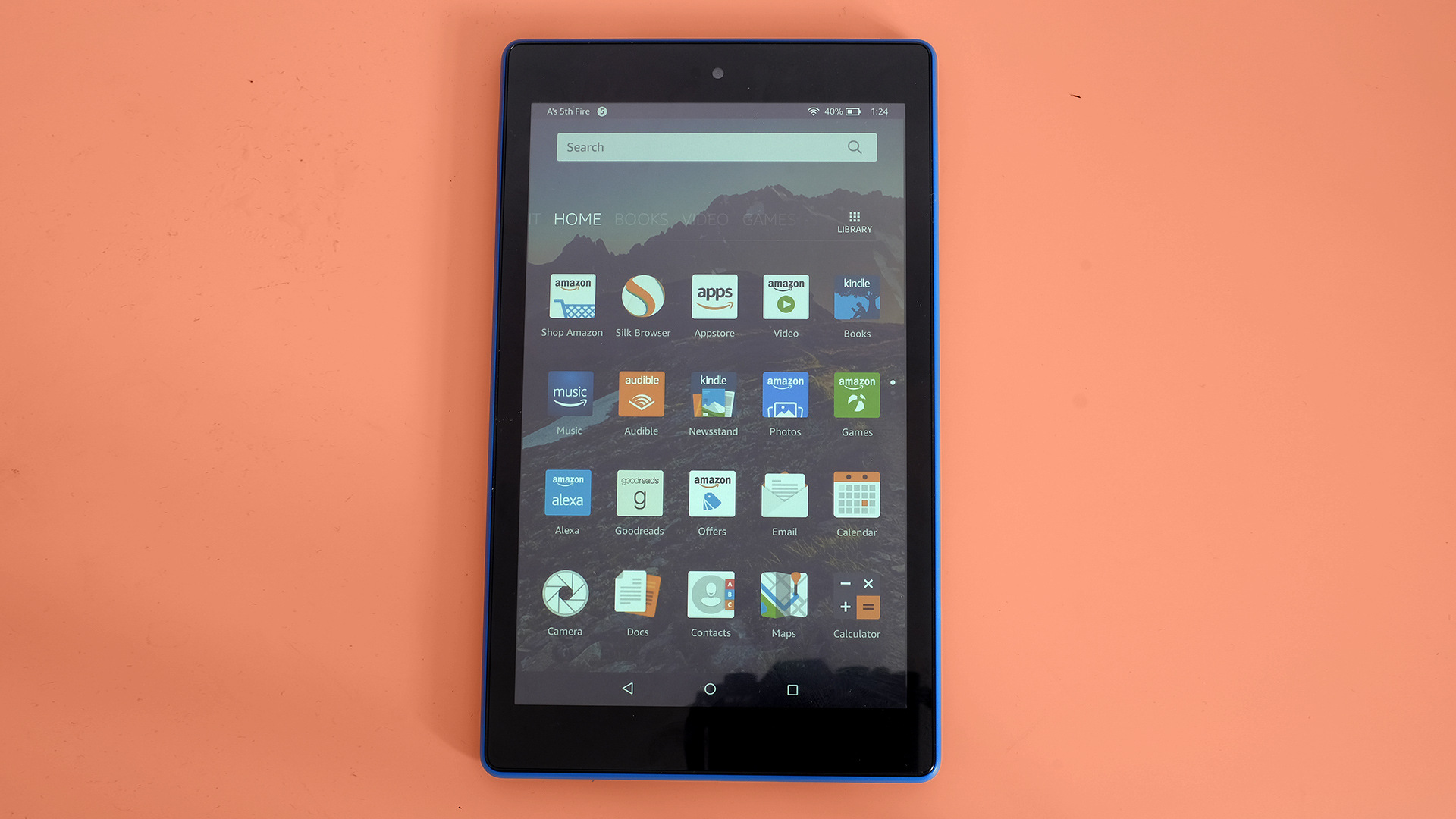
This isn’t an incredibly quick tablet either. Most games and apps will run just fine, even high-end ones, but the system isn’t as fast to respond as a powerful Android tablet.
At its core, the Amazon Fire HD 8 runs on Android, but there’s an Amazon-made interface on top called Fire OS. This looks nothing like Android and can seem heavy-handed in the way it pushes you towards Amazon services like Prime Video.
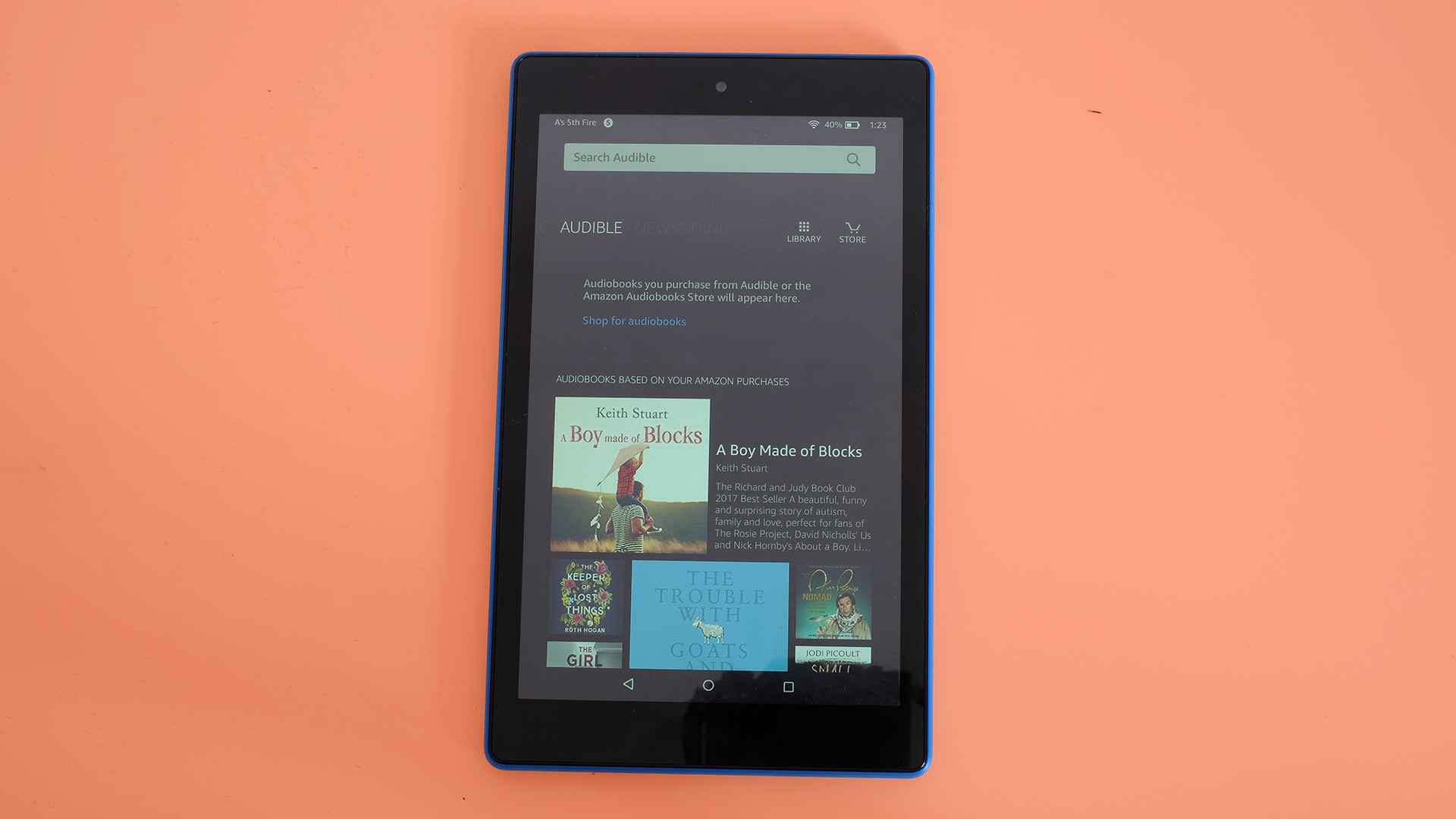
It’s the aim of Amazon tablets like this, really, to get you to read books, watch movies and listen to music through Amazon portals. In return you get a decent, very affordable piece of hardware.
Keep your expectations for camera quality low, though. Photos taken with the Fire HD 8’s 2MP camera are almost certainly going to look worse than those taken with your phone. Unless you still use a phone from the 90s.
The most remarkable thing about the Amazon Fire HD 8 is the price, but that’s the whole idea. And thanks to Amazon’s adherence to basic performance standards, this tablet is still a lot of fun to play around with.
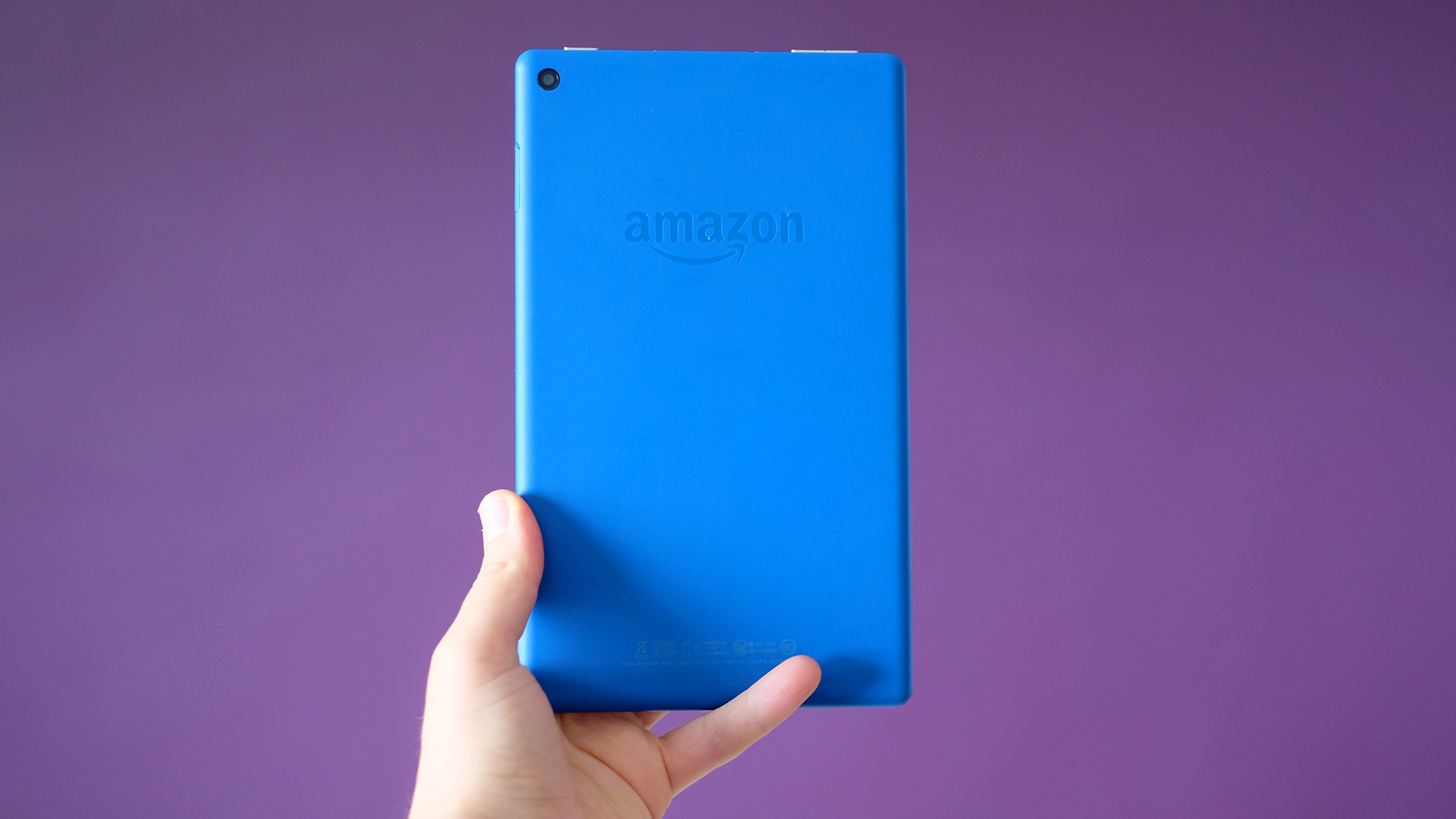
Design and display
- Solid build given the price
- Pleasant but reflective and low-res screen
- Highly portable
Until you get the 2017 Amazon Fire HD 8 and last year’s model side-by-side, they look identical. It’s a slim-feeling 9.7mm thick plastic tablet whose 8-inch widescreen display makes it seem much more an alternative to an iPad Mini 4 than a full-size iPad.
This is the sort of tablet you might sling in a bag to kill a few minutes on a boring work commute. It’s inoffensive, plain and practical.
The Fire HD 8 also comes in a few different colors. We’re using the blue version. Black, yellow and red versions are available too. The blue model is a bit darker than last year’s, perhaps an attempt to make it seem more grown-up, to avoid the toy-like look of a bright plastic gadget.
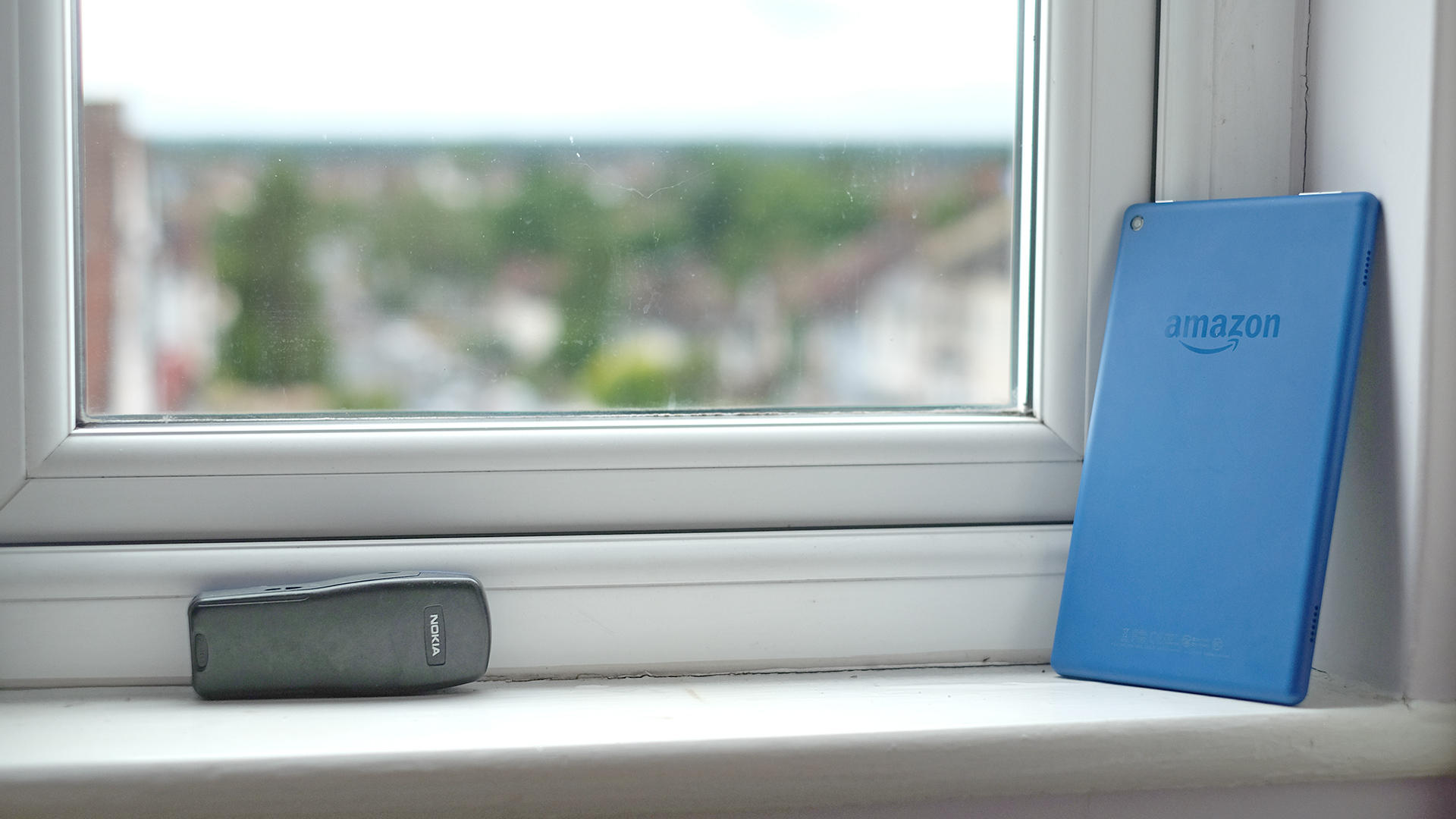
Amazon’s low-end tablets have always offered surprisingly good build quality, and this actually seems to have improved further this year. A bit of finger pressure would make parts of the old model’s back flex and actually ‘click’ as the plastic hit the internals, but the Amazon Fire HD 8 (2017) seems dense and flex-free. In an $80/£80 tablet, that’s impressive.
You don’t, however, get any of the fancy features that have migrated from phones to tablets. There’s no fingerprint scanner, no water resistance.
The basic Fire HD 8 comes with 16GB of storage, but you can upgrade to 32GB for an extra $30/£20 if you like. There’s also a microSD slot on the side that supports cards of up to a huge 256GB, giving you as much room for media files as a laptop. Even the standard 16GB gives you enough space for a good selection of apps and games.
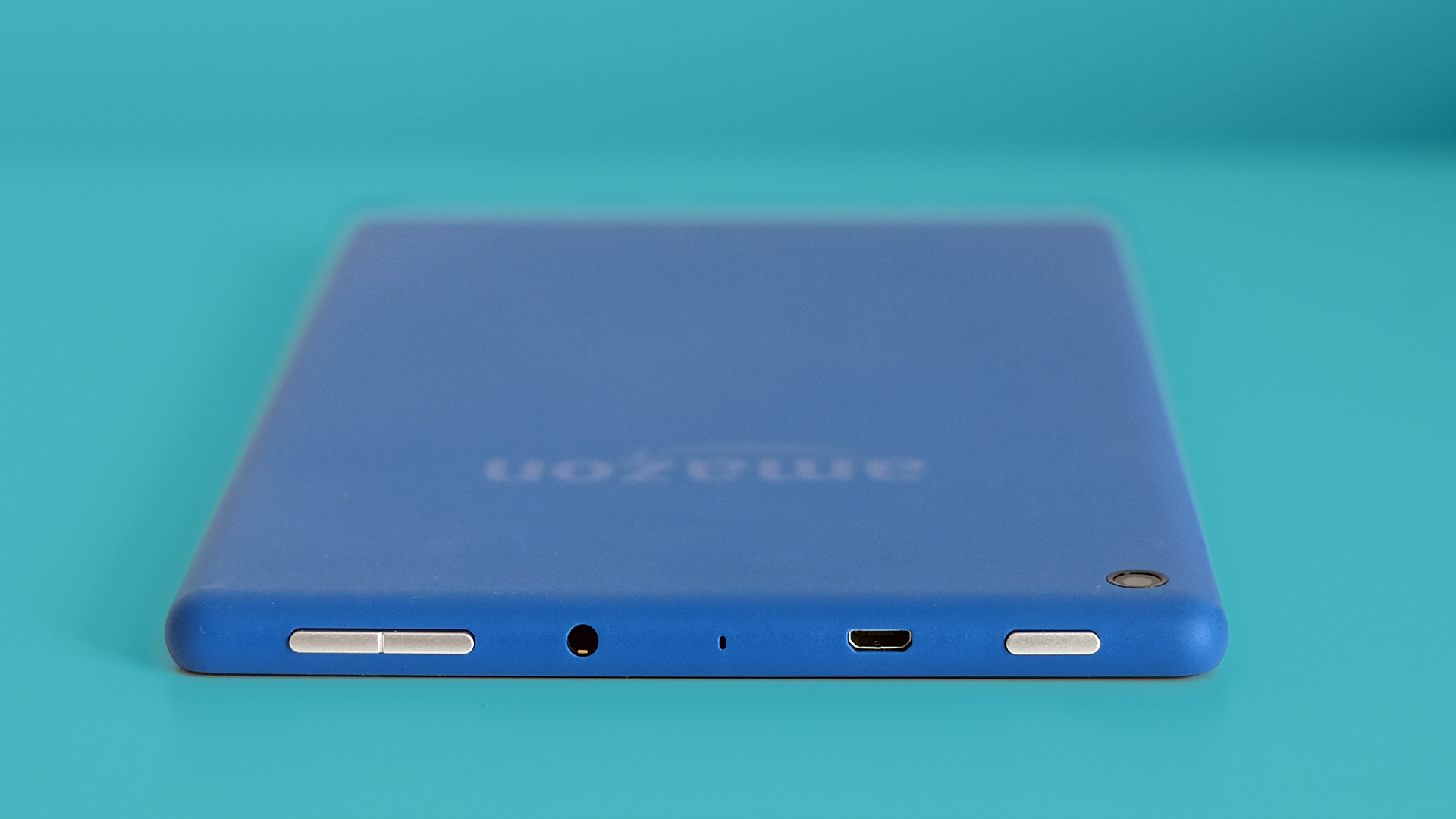
Considering the price, the display isn’t too bad either. The crucial element is that Amazon uses IPS LCD screens in its low-cost tablets. This kind of display looks fine no matter what angle you look at it from, where the TN LCD screens still used in cheap laptops look shadowy and inverted if you tilt your head the wrong way.
Resolution is low at 1280 x 800 pixels, providing 189 pixels per inch, and that means you can see some pixelation quite clearly. However, we don’t think it’s enough to ruin the experience. You can still read text and games don’t look super-blocky.
Color is good for a low-end screen as well. Its character seems ever-so-slightly tweaked since the last model, but the effect is largely the same: tones look punchy enough to make games and movies satisfying.
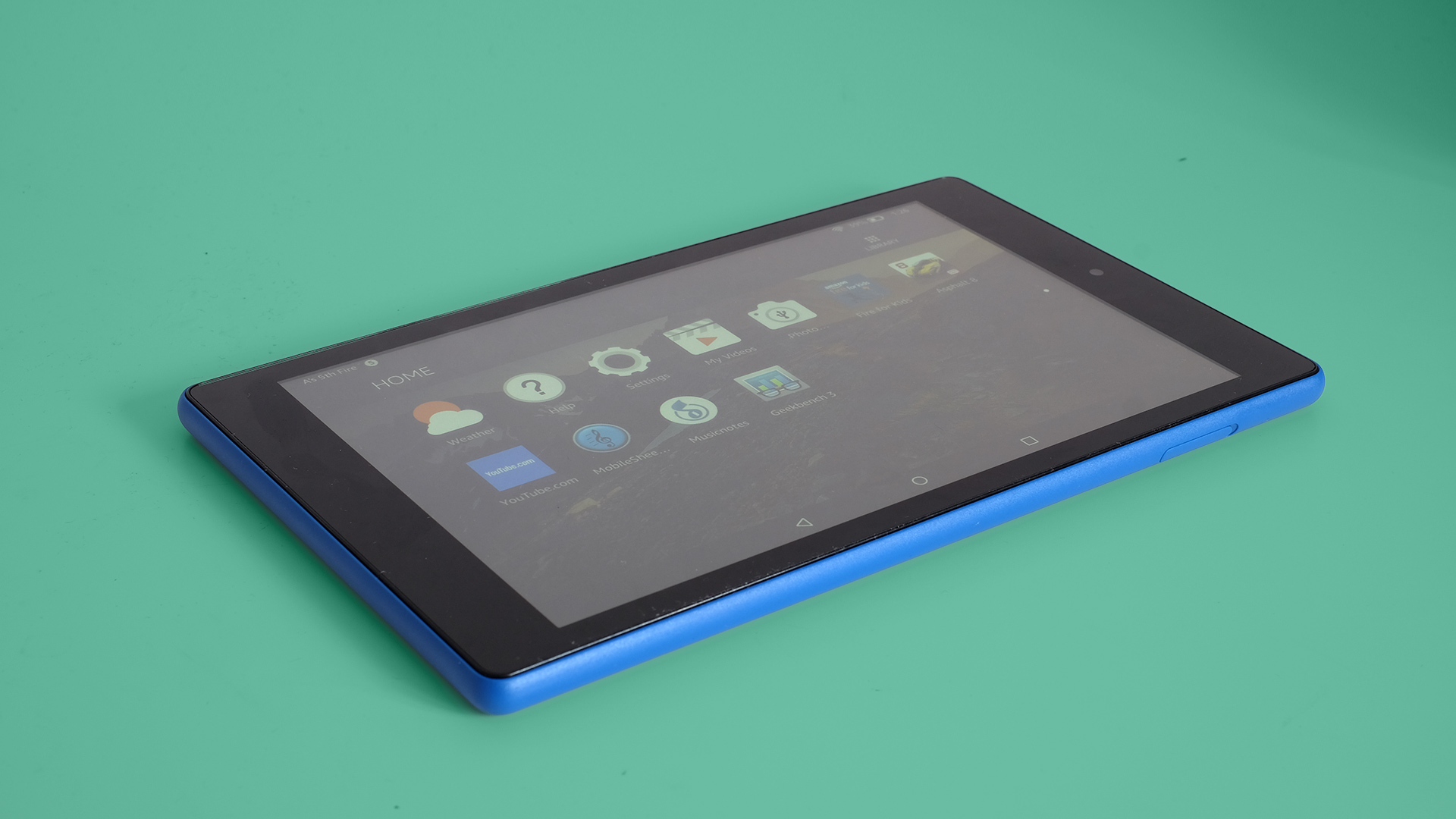
You don’t get the same sort of color richness you’d see in an iPad Mini or Samsung Galaxy Tab S3, but it doesn’t compare too badly to Samsung’s lower-cost (but still more expensive) Galaxy Tab A 7.0.
The one part we’d love to see Amazon address, though, is the contrast-reducing structure of the screen. A lot of high-quality tablets now use a process called full screen lamination, which is where the touchscreen and display layers are fused together instead of sitting on top of each other.
You don’t get that in the Fire HD 8 (2017), and it leads to the screen image seeming slightly recessed below the surface and the display looking grey rather than pitch-black when the screen is off.
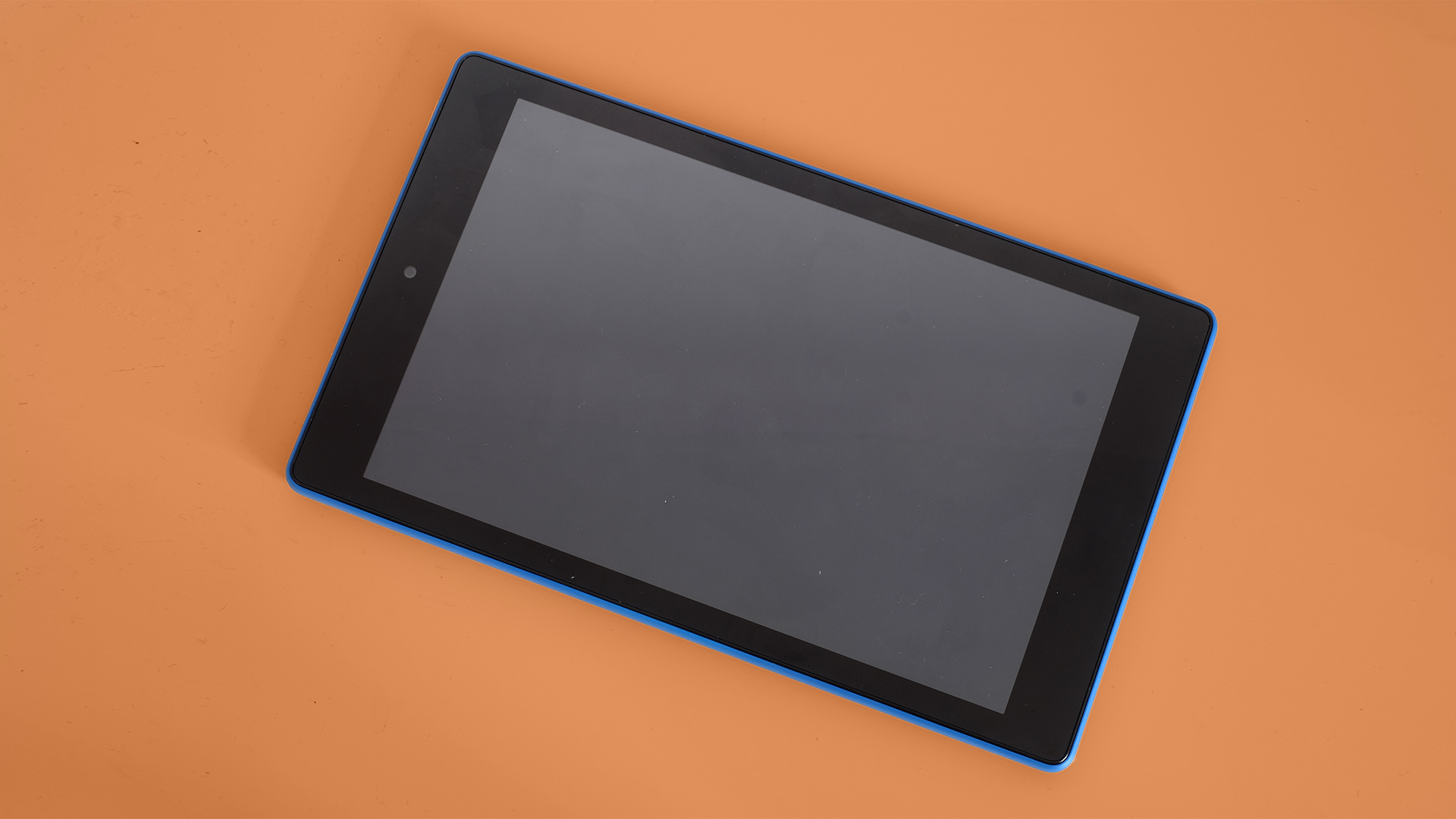
The new iPad isn’t laminated either, but the ill effects are far more pronounced here. Comparing directly with last year’s model, Amazon seems to have made some small improvements here, but full screen lamination would boost image quality into the next league.
As-is, the Fire HD 8’s display is very reflective, and contrast gets eaten away in well-lit rooms or outdoors. Like most cheaper tablets there’s no auto brightness setting either, so you need to remember to jack up the brightness when outside or you’ll barely be able to see what’s on-screen.
We can’t count the number of times a friend has complained their phone/tablet screen isn’t working properly only to realize it’s because they haven’t tweaked the brightness.
Andrew is a freelance journalist and has been writing and editing for some of the UK's top tech and lifestyle publications including TrustedReviews, Stuff, T3, TechRadar, Lifehacker and others.
